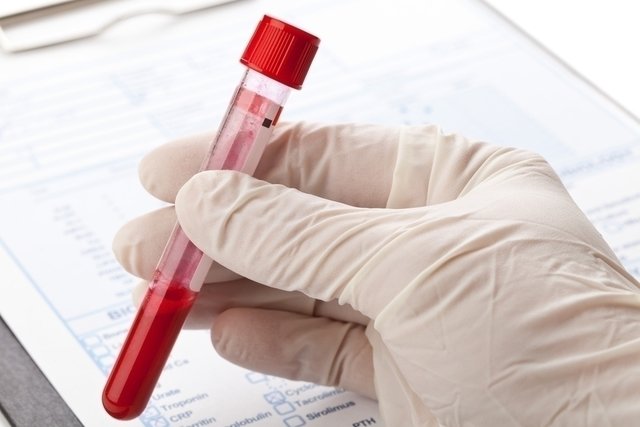The INR is a test that evaluates blood clotting and is indicated to identify clotting problems, monitor treatment with anticoagulants, assess the risk of bleeding and liver function.
When the INR is high it means that the blood is thinner than normal and, therefore, symptoms such as bleeding from the nose or gums, vomiting or urine with blood and purple spots on the body may appear, which tend to appear without an apparent cause.
In case of changes in the INR test, it is recommended to consult a hematologist or general practitioner, especially if bleeding occurs. In cases where the person uses anticoagulants, the doctor may recommend adjusting the dose of the medication.

What is it for
The INR exam is indicated for:
- Identify blood clotting problems;
- Monitor treatment with anticoagulants such as warfarin;
- Check the risk of bleeding;
- Assess liver function.
Furthermore, the results of the INR test help the doctor to adjust the dose of medication during treatment with anticoagulants in order to avoid complications such as bleeding and prevent thrombosis. Find out the main precautions during treatment with anticoagulants.
Difference between TP and INR
PT (prothrombin time) is a test that measures the time, in seconds, that it takes for a person’s blood to clot after adding thromboplastin to the collected blood sample. Understand better what TP is and what it is for.
The INR test is based on the PT result, being calculated as a proportion between the person’s PT and the standard PT used by the laboratory.
Normal INR value
The normal INR ranges from 0.8 to 1.0 in healthy people. However, when taking anticoagulants, INR values tend to be higher, generally between 2.0 and 3.0, without being considered a problem.
Especially for people who use anticoagulants, ideal INR values vary according to the medical condition being treated, and it is important to consult a hematologist or general practitioner and carry out treatment according to their instructions.
For example, a person who has had a venous thrombosis may need to have an INR between 2.0 and 3.0. If a person has a mechanical valve in their heart, the ideal INR may be 3.0.
If you want to make an appointment, you can find the hematologist closest to you using the tool below:
Taking care of your health has never been easier!
What does INR less than 2.0 mean?
An INR less than 2.0 may indicate that treatment with anticoagulants is not sufficient to prevent blood clotting. In people who do not use these medications, INR values between 1.1 and 1.9 may indicate a greater risk of bleeding.
Furthermore, values below 0.8 in healthy people may mean a greater risk of clot formation.
Signs that your INR is high
Signs that your INR is high include:
- Bleeding from wounds that takes time to stop;
- Nose bleeding;
- Vomiting with blood or similar to coffee grounds;
- Gums bleeding when brushing teeth;
- Purple spots on parts of the body with no apparent cause;
- Reddish urine or visible blood.
In case of signs of high INR, it is important to consult a doctor. Furthermore, if the bleeding is severe or symptoms such as drowsiness and low blood pressure appear, it is recommended to go to an emergency room for evaluation.
Bibliography
- STATPEARLS. Prothrombin Time. 2022. Available at: <https://www.ncbi.nlm.nih.gov/books/NBK544269/>. Accessed on 18 Jul 2023
- MAYO CLINIC. Prothrombin time test. Disponível em: <https://www.mayoclinic.org/tests-procedures/prothrombin-time/about/pac-20384661>. Acesso em 18 jul 2023
- UNIVERSITY OF IOWA HOSPITALS & CLINICS. Possible warfarin side effects and signs of a blood clot. Disponível em: <https://uihc.org/educational-resources/possible-warfarin-side-effects-and-signs-blood-clot>. Acesso em 18 jul 2023
- NATF. A Guide to INR Levels. Available at: <https://thrombosis.org/2020/11/guide-inr-levels/>. Accessed on 18 Jul 2023
- DORGALALEH, Akbar et al. Standardization of Prothrombin Time/International Normalized Ratio (PT/INR). Int J Lab Hematol. Vol.43, n.1. 21-28, 2021
- DRINKS, Beuy; WIWANITKIT, Viroj. Therapeutic International Normalized Ratio Monitoring. Turk J Haematol. Vol.34, n.1. 101-102, 2017
- HEALTHDIRECT. International normalised ratio (INR) test. Available at: <https://www.healthdirect.gov.au/international-normalised-ratio-INR-test>. Accessed on 18 Jul 2023
- STATPEARLS. International Normalized Ratio (INR). 2023. Available at: <https://www.ncbi.nlm.nih.gov/books/NBK507707/>. Accessed on 18 Jul 2023
- CHORNENKI, Nicholas L. J; FRALICK, Michael; SHOLZBERG, Michelle . International normalized ratio and activated partial thromboplastin time testing. CMJ. Vol. 194, n. 33. E1135, 2022

Sign up for our newsletter and stay up to date with exclusive news
that can transform your routine!
Warning: Undefined array key "title" in /home/storelat/public_html/wp-content/plugins/link-whisper-premium/templates/frontend/related-posts.php on line 12
Warning: Undefined array key "title_tag" in /home/storelat/public_html/wp-content/plugins/link-whisper-premium/templates/frontend/related-posts.php on line 13



